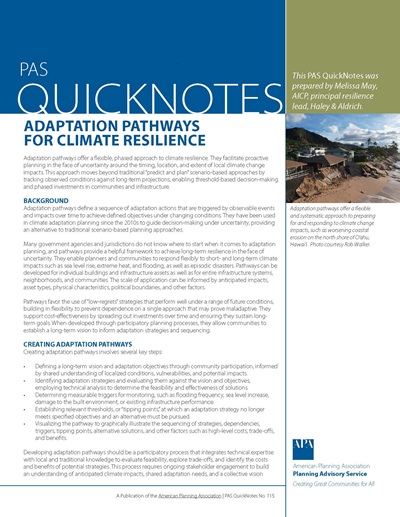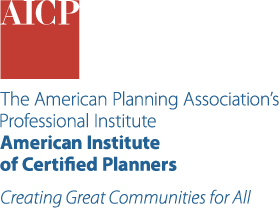Adaptation Pathways for Climate Resilience
PAS QuickNotes 115
By Melissa May, AICP

Adaptation pathways offer a flexible, measured approach to climate resilience. They define a sequence of adaptation actions that are triggered by observable events and impacts over time to achieve defined objectives under changing conditions. Adaptation pathways move beyond traditional "predict and plan" scenario-based approaches by tracking observed conditions against long-term projections, enabling threshold-based decision-making and phased investments in communities and infrastructure.
This edition of PAS QuickNotes explains how developing adaptation pathways for climate resilience facilitates proactive planning in the face of uncertainty around the timing, location, and extent of local climate change impacts.
Details
About the Author
Melissa May, AICP
Melissa May, principal and resilience lead at Haley & Aldrich, has extensive experience advancing climate resilience across built environments. She has partnered with state and local agencies on award-winning projects including resilient design guidelines, watershed plans, and policy analysis for climate adaptation and managed retreat. As resilience lead, Melissa develops business and strategy for Haley & Aldrich’s Resilience team and integrates resilience into practice areas across the firm. Melissa’s comprehensive knowledge of the policy and regulatory landscape makes her an invaluable problem-solving partner on complex planning and policy issues. Her inclusive, systems-based approach ensures that every project reflects a shared vision, builds community capacity, and provides a pathway to implementation.


